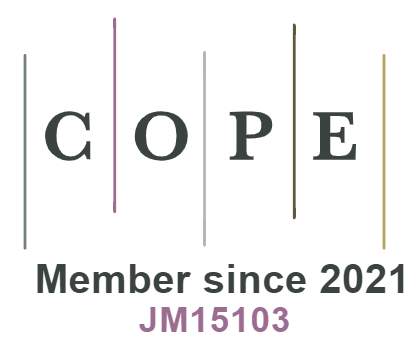Funkcja i znaczenie prologu w „Protagorasie” Platona (Prot. 309A– 316A)
DOI:
https://doi.org/10.18778/1733-0319.22.01Słowa kluczowe:
Platonic dialogue, Socrates, sophists, Attic comedy, dramatic sceneAbstrakt
Plato’s Protagoras belongs to the most read and analyzed works of the philosopher. Interest is aroused not only by the content of the work, but also by its form: diligent composition, elaborate descriptions of characters and dramatic nature of separate scenes, although the work belongs to the group of narrative dialogues. The aim of this article is to analyze the prologue of Protagoras, which consists of five scenes (309a–316a), to answer the question what function they have and how important role they play in this dialogue.
Bibliografia
Adam, J., Adam, A.M. (1971). Platonis Protagoras. Cambridge: Cambridge University Press.
Google Scholar
Arnim von, H. (1914). Platons Jugenddialoge und die Entstehungszeit des „Phaidros“. Leipzig.
Google Scholar
Bernhard, M.L. (1991). Sztuka grecka V wieku p. n. e. Warszawa: Państwowe Wydawnictwo Naukowe.
Google Scholar
Borowska, M. (1995). OIKEIA PRAGMATA. Z dziejów dramatis personae komedii greckiej następców Arystofanesa. Warszawa: Wydawnictwo Uniwersytetu Warszawskiego.
Google Scholar
Capizzi, A. (1955). Protagora. Le testimonianze e frammenti. Firenze: Sansoni.
Google Scholar
Capra, A. (2001). Agon logon: il „Protagora” di Platone tra eristica e commedia. Milano: LED – Edizioni Universitarie di Lettere Economia Diritto.
Google Scholar
Connolly, P., Dodge, H. (1998). Antyczne miasta. Cuda architektury, życie społeczne, kulturalne i religijne. Przeł. B. Tkaczow. Warszawa: Wydawnictwo RTW.
Google Scholar
Dawidowicz, T. (1986). Narrator w diegematycznych dialogach Platona. Maszynopis rozprawy doktorskiej. Toruń.
Google Scholar
Diels, H., Kranz, W. (1960). Die Fragmente der Vorsokratiker. Berlin: Weidmannsche Buchhandlung.
Google Scholar
Dreikopel, T. (2005). Wizerunek Protagorasa z Abdery w Platońskim dialogu „Protagoras“ (309a-348a), [w:] W. Wróblewski (red.). W kręgu Platona i jego dialogów. Toruń: Wydawnictwo Uniwersytetu Mikołaja Kopernika. 103–165.
Google Scholar
Flacelière, R. (1985). Życie codzienne w Grecji za czasów Peryklesa. Przeł. Z. Bobowicz i J. Targalski. Warszawa: Państwowy Instytut Wydawniczy.
Google Scholar
Friedländer, P. (1930). Die Platonischen Schriften. Berlin und Leipzig: Walter de Gruyter & Co.
Google Scholar
Gauss, H. (1952). Philosophischer Handkommentar zu den Dialogen Platos. Bern: Herbert Lang.
Google Scholar
Gigon, O. (1972). Studien zur antiken Philosophie, Berlin–New York: Walter de Gruyter.
Google Scholar
Głodowska, A. (2009). Il tempo nei dialoghi platonici („Protagora”, „Simposio”, „Fedro”), [w:] J. Czerwińska et al., Kategorie i funkcje czasu w ujęciu starożytnych. Łódź: Wydawnictwo Uniwersytetu Łódzkiego. 117–131.
Google Scholar
Głodowska, A. (2013). Dramatyczne elementy Platońskich dialogów, [w:] Z. Głombiowska (red.), Inter textus. Między tekstami. Gdańsk: Wydawnictwo Uniwersytetu Gdańskiego. 9–18.
Google Scholar
Głodowska, A. (2015). Portret ateńskiej elity literackiej w „Uczcie” Platona, [w:] M. Cieśluk (red.), Elity w świecie starożytnym. Szczecin: Wydawnictwo Naukowe Wydziału Humanistycznego US Minerwa. 73–87.
Google Scholar
Głodowska, A. (2018). Wizerunek Hippiasza z Elidy w dialogach Platona, [w:] S. Dworacki, M. Jaworska-Wołoszyn (red.), Filozofia w literaturze i sztuce. Gorzów Wielkopolski: Wydawnictwo Naukowe Akademii im. Jakuba z Paradyża. 31–50.
Google Scholar
Hirzel, R. (1963). Der Dialog. Ein Literarhistorischer Versuch. T. 1. Hildesheim: Georg Olms Verlagsbuchhandlung.
Google Scholar
Homer (1992). Odyseja. Przeł. L. Siemieński. Wrocław: Zakład Narodowy im. Ossolińskich – Wydawnictwo.
Google Scholar
Kocur, M. (2001). Teatr antycznej Grecji. Wrocław: Wydawnictwo Uniwersytetu Wrocławskiego.
Google Scholar
Krońska, I. (1983). Sokrates. Warszawa: Wiedza Powszechna.
Google Scholar
Nails, D. (2002). The People of Plato. A Prosopography of Plato and Other Socratics. Indianapolis/Cambridge: Hackett Publishing Company, Inc.
Google Scholar
Olejarczyk, A. (2001). Dialogi Platona – dzieło otwarte. Wrocław: Oficyna Wydawnicza Arboretum.
Google Scholar
Pawlak, A. (1996). „Elementi di dramma nel Protagora di Platone”. Eos LXXXIV (Fasc. 2). 277–283.
Google Scholar
Plato (1901–1903). Opera. Recognovit brevique adnotatione critica instruxit I. Burnet. Oxonii: Oxford University Press.
Google Scholar
Plato (1990). Kratylos. Przeł. Z. Brzostowska. Lublin: Redakcja Wydawnictw KUL.
Google Scholar
Platon (2005). Dialogi. Przeł. W. Witwicki. T. 1–2. Kęty: Wydawnictwo Antyk.
Google Scholar
Reale, G. (2001). Protagora. Prefazione, saggio introduttivo, traduzione e note di G. Reale. Milano: Bompiani.
Google Scholar
Rutherford, R.B. (1995). The Art of Plato. Ten Essays in Platonic Interpretation. Cambridge, Massachusetts: Harvard University Press.
Google Scholar
Stella, L.A. (1932). „Influssi di poesia e d’arte ellenica nell’opera di Platone”. Historia (VI). 433–472.
Google Scholar
Taplin, O. (2004). Tragedia grecka w działaniu. Przeł. A. Wojtasik. Kraków: Wydawnictwo Homini.
Google Scholar
Turasiewicz, R. (1983). Problem antycznej ironii. Kraków: Państwowe Wydawnictwo Naukowe.
Google Scholar
Tuszyńska-Maciejewska, K. (1996). Platon a retoryka. Od krytyki do modelu. Poznań: Wydawnictwo Uniwersytetu im. Adama Mickiewicza w Poznaniu.
Google Scholar
Untersteiner, M. (1949). Sofisti. Testimonianze e frammenti. Fasc. I: Protagora e Seniade. Firenze: La Nuova Italia Editrice.
Google Scholar
Wasilewski, M. (2013). Protagoras z Abdery sofista i wychowawca. Studium z historii filozofii wychowania. Łódź: Wydawnictwo Uniwersytetu Łódzkiego.
Google Scholar
Wesoły, M. (2011). „Protagoras“ Platona: kompozycja, rozgrywka logosów i sokratejska parodia, [w:] A. Pacewicz (ed.), Kolokwia Platońskie. Protagoras. Wrocław: Polskie Forum Filozoficzne. 15–32.
Google Scholar
Wilamowitz-Moellendorff, U. (1920). Platon. Leben und Werke. T. 1–2. Berlin: Weidmannsche Buchhandlung.
Google Scholar
Pobrania
Opublikowane
Jak cytować
Numer
Dział
Licencja

Utwór dostępny jest na licencji Creative Commons Uznanie autorstwa – Użycie niekomercyjne – Bez utworów zależnych 4.0 Międzynarodowe.












